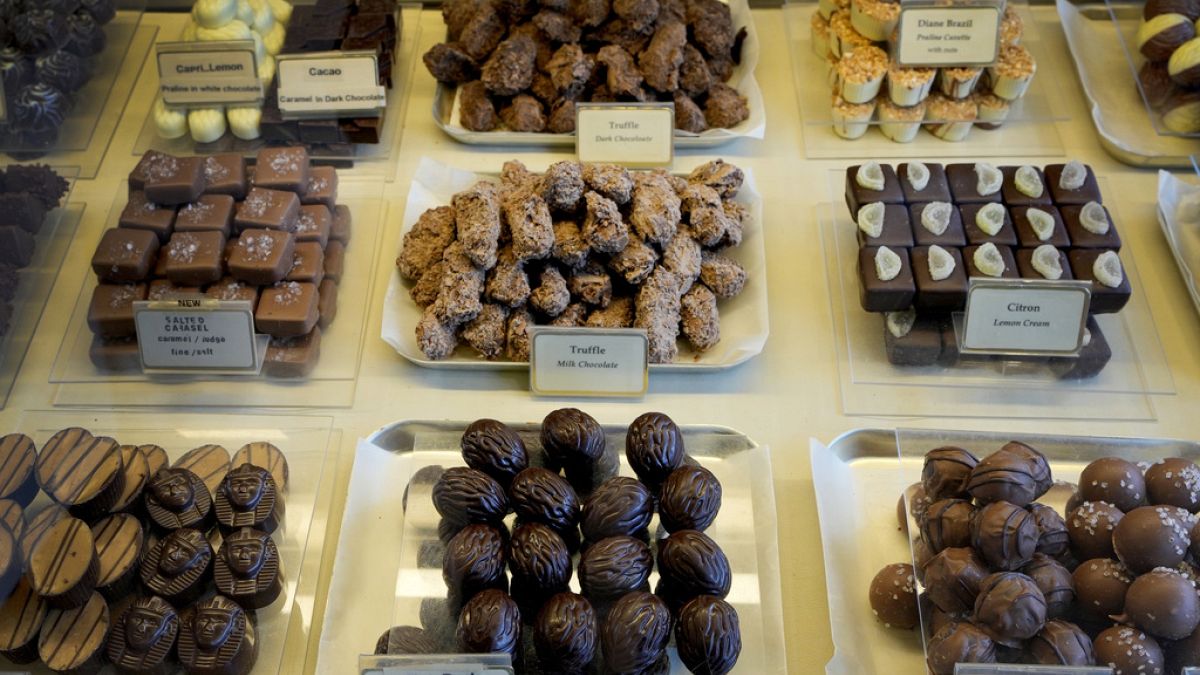Cocoa prices have been steadily rising due to poor harvests, as a result of extreme weather in important cocoa-producing countries in West Africa.
Cocoa prices briefly surged to all-time highs on Tuesday, touching over $10,000 (€9,234.3) per ton, before settling back at $9,622 per ton on Wednesday morning, following disappointing harvests in key cocoa-producing countries such as Ghana and Ivory Coast. Cameroon, another cocoa-producing nation, has also been seeing much of the same conditions.
The crop also saw a 19.8% gain in the past week, as well as a 42.4% rise this month. In the past year, cocoa prices have jumped about 231%.
Cocoa is widely used in a number of chocolate products and confectioneries, with by-products such as cocoa nibs, cocoa butter, cocoa pod husks and pulp also being used for soft drinks, alcohol, vinegar, cosmetics, health supplements, fragrances and more.
However, due to chocolate being by far the most common cocoa product, the rising cocoa prices have led to more worries about higher chocolate prices, as well as a chocolate shortage.
Why are cocoa prices rising?
Cocoa prices have been rapidly increasing for the last few months due to worse-than-expected harvests from in Western African countries such as Ghana and Ivory Coast, squeezing cocoa supplies worldwide.
This is mainly due to the weather phenomenon El Nino, which caused unseasonably heavy rainfall in December last year, resulting in black pod disease widely damaging crops. A combination of climate change and the continuation of El Nino also led to extreme heat in the following months, further disrupting harvests.
El Nino particularly impacts cocoa and other crops by exacerbating dry, dusty winds from the Sahara desert, which impact the crops’ access to sunlight. Since cocoa is an especially drought-sensitive crop, this harsher, dryer weather can be particularly debilitating for harvests.
Ageing cocoa trees also contributed to lower harvests, as they are more susceptible to disease. This also means that they are more expensive to maintain, with several farmers choosing to abandon old cocoa trees and farms, for greener pastures.
Illegal mining in West African regions has also increased drastically, due to the rich deposits of metals and minerals such as gold, uranium, iron ore and diamonds, amongst others. This has led to a massive loss of arable land, due to deforestation, as well as declining water body quality.
Rising cocoa prices do not seem to be translating into gains for cocoa farmers, who are still struggling considerably with increased production costs and reduced crop yields. As such, several farmers have also chosen to sell their cocoa farms and lands to mining companies.
What does this mean for chocolate manufacturers?
Several cocoa plants in Ghana and Ivory Coast have reportedly decreased or stopped cocoa processing activities due to the beans becoming too expensive to procure.
Furthermore, the Ivory Coast cocoa regulator has also revealed that it expects the country's mid-crop, starting in April to drop approximately 33% to about 400,000 metric tons. If so, this would be quite a step down from last year's 600,000 metric tons.
Similarly, Ghana has also announced that its cocoa production forecast is now expected to be about 650,000 tons, down from 850,000 tons for this year.
Chocolate maker Hershey’s has already warned that record high cocoa prices were likely to impact earnings growth this year.
Hershey’s chief executive officer Michele Buck said in an analyst call, as reported by BBC, “We can’t talk about future pricing, but given where cocoa prices are, we will be using every tool in our toolbox, including pricing, as a way to manage the business.”
Mondolez, the owner of Cadbury, Oreo and Toblerone, also hiked chocolate prices by up to 15% in 2023, and has indicated that it is likely to continue doing so to achieve its revenue forecasts for this year. The company also highlighted rising sugar prices as one of the key challenges for the upcoming year, along with cocoa prices.
The company’s chief financial officer, Luca Zaramella, said: “Pricing is clearly a key component of this plan. Its contribution will be a little bit less than we have seen in 2023, but it is higher than an average year,” as reported by AP.
Easter sales likely to bring a silver lining for chocolate makers
Upcoming Easter chocolate sales are likely to ease chocolate maker concerns for the short-term at least, with several manufacturers already having raised the prices of Easter eggs and bunnies.
Consumer services and research company Which? revealed that brands such as Toblerone and Lindt have already hiked prices for their popular chocolate bunnies and eggs by about 50%, compared to 2023. The sizes of several sweet treats have also decreased, as manufacturers continue to find ways to cut corners.
Several manufacturers, such as Hersheys, are also pushing the sales of non-cocoa products, such as their cookies and cream range, as well as gummy bears and other candy, to make up for the higher chocolate prices.
However, this year, consumers may very well also be a little more cautious when it comes to holiday and non-essential spending, due to the ongoing cost of living crisis. This may potentially put a cap on Easter sales, as consumers shop more mindfully and hunt for better bargains.



